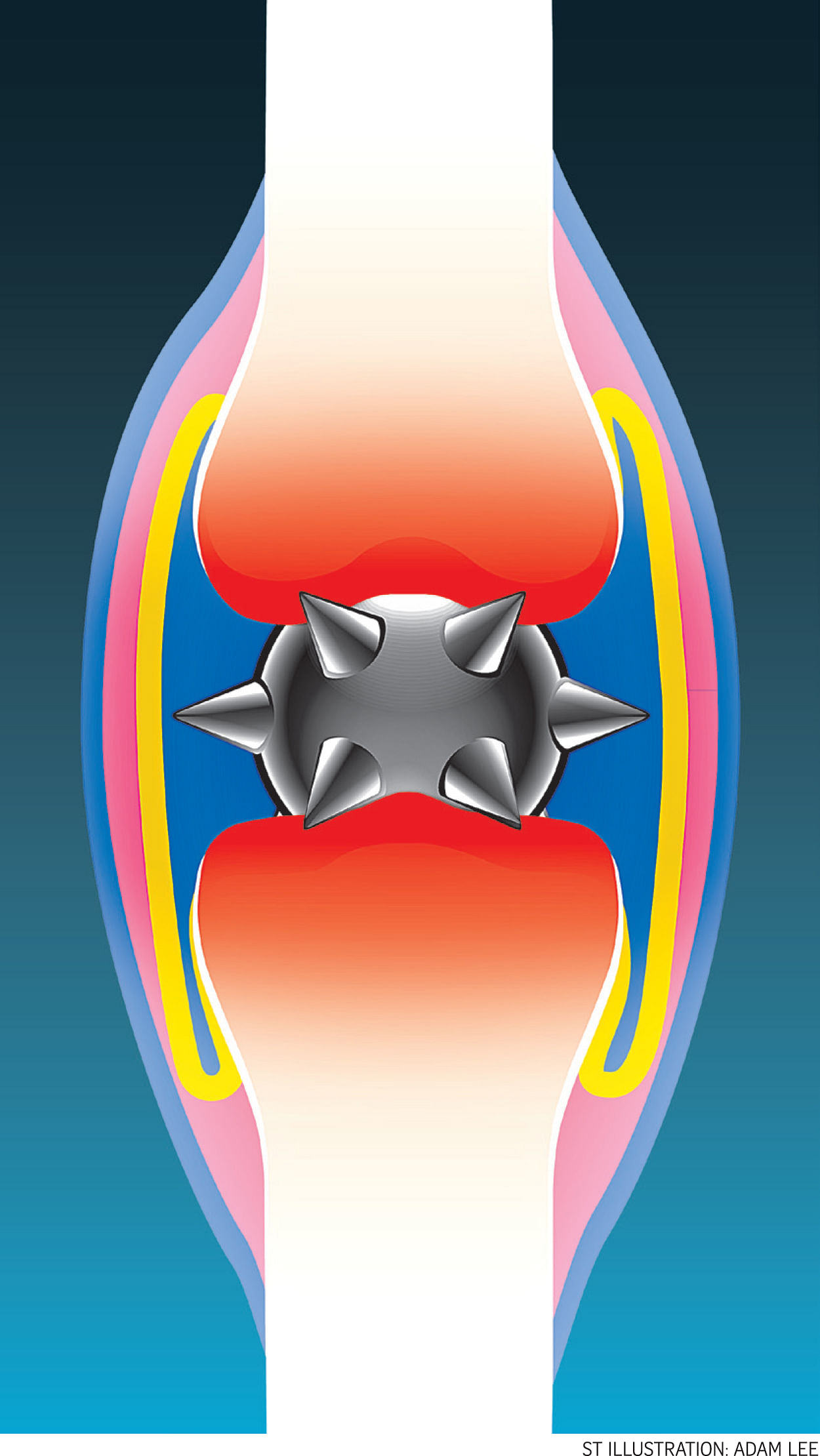Madam T, 34, had joint pain and the swelling in her fingers and wrists had become so agonising that it severely affected her daily activities over the past four months.
Not only that, she suffered joint stiffness every morning and always felt tired. The housewife found it hard to perform household chores and look after her young children.
As the symptoms were worsening, she visited a doctor at a polyclinic and was referred to a specialist.
Her symptoms are typical of an early onset of rheumatoid arthritis.
A series of blood tests confirmed that she indeed had the condition.
She was devastated. She recalled an elderly relative with the condition who ended up with severely crooked hands, which hindered her from doing simple actions like writing, opening a can or buttoning a shirt.

Madam T's biggest fear was losing more of her hand function and having permanently deformed joints.
One common question my patients , including Madam T, ask is: "How could I have contracted this disease?" Unfortunately my answer is usually less than satisfactory - the cause is unknown.
Worldwide, scientists are working to understand the disease process of rheumatoid arthritis.
Existing scientific evidence shows that the condition is likely to be hereditary and is triggered by environmental factors, of which the best-studied are cigarette smoking and a bacterium related to gum inflammation.
The typical joints affected in rheumatoid arthritis are small joints, like those in the fingers and wrists.
In addition to pain and swelling, patients may complain of tiredness or weight loss. While most have a gradual onset of symptoms, some suffer acute symptoms.
In Singapore, an estimated 0.5 to 1 per cent of the general population have rheumatoid arthritis.
Women are about three times more frequently affected than men.
In contrast to the common belief that only old people get arthritis, rheumatoid arthritis can affect both the young and old, including many working adults.
According to the Singapore Burden of Disease Study 2010, the condition was the 12th leading cause of overall burden in the country. This is defined by disability-adjusted life years, a measurement expressed as the number of years lost due to ill health, disability or early death.
Madam T asked if she should try traditional Chinese medicine (TCM) treatment.
I discouraged her from doing so because TCM lacks vigorous data from clinical trials and it may interact with prescribed medication.
I gave Madam T two kinds of medication - methotrexate and prednisolone, which could suppress the joint inflammation.
An advanced nurse practitioner trained in rheumatology counselled Madam T on managing her condition, diet and medication.
She also received advice from a physiotherapist to carry out regular exercises for general fitness to improve joint movements.
During subsequent clinic visits, Madam T reported significant pain relief from the treatment.
However, the side effects of prednisolone, such as an increased appetite, weight gain and facial puffiness were also apparent, and caused her some distress. The side effects eventually went away after prednisolone was tapered off.
Over the last two decades, our understanding of the disease process in rheumatoid arthritis has improved tremendously, and this has revolutionised its treatment.
Rheumatologists recognise that the key to preventing disability associated with rheumatoid arthritis is early diagnosis and treatment by using the treat-to-target approach.
Like treating hypertension, high cholesterol and diabetes, we aim to bring down the disease activity markers to an acceptable level. A state of remission can be achieved.
Treatment should start as soon as possible, within the "window of opportunity" of about three to six months after symptoms appear.
After this, irreversible joint damage may occur.
Joint damage is associated with disability and a poor quality of life. Chronic inflammation in rheumatoid arthritis also increases the risk of cardiovascular events like a stroke and heart attack.
Madam T's prognosis is good as her condition was diagnosed only a few months after symptoms appeared and treatment was initiated promptly.
While some patients can be treated with a single drug, others may need a combination of two or three drugs to achieve clinical remission.
Although newer treatment options were not discussed during Madam T's initial consultations, she was advised that more advanced therapies are available should conventional treatments fail.
At the last clinic review last July, Madam T's condition was seen to have improved but has yet to reach remission. She still has residual joint pain, especially in the left wrist and right elbow. But she has more energy and is able to look after her young children.
Until a cure for this disease is found, the journey of a rheumatoid arthritis patient is lifelong. But with early diagnosis and early treatment, it is possible that such a patient can lead a normal life.
•Dr Ng is a consultant at the department of rheumatology and immunology at the Singapore General Hospital.

